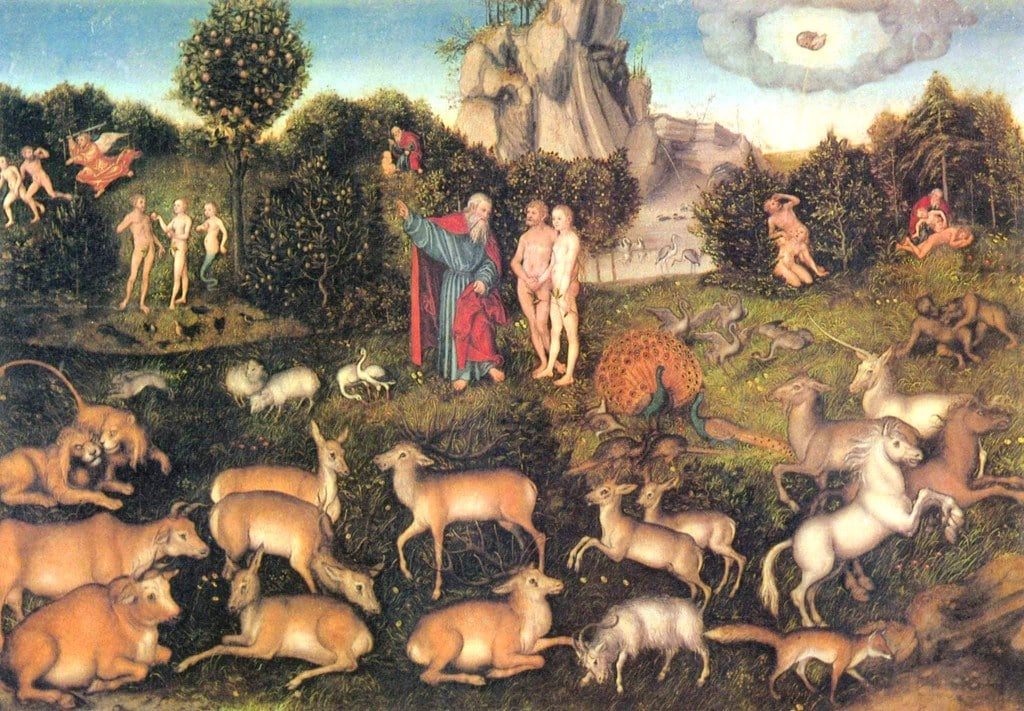Purgatory, Hell, Jews, and the Old Testament
Orthodox Jews sometime speak of the Gan Eden (“Garden of Eden”) as the place of spiritual reward. It seems that Gan Eden is not the “historical” location described in the Bible. The term is used to evoke the beauty and peace that man experienced prior to sin.
The Garden of Eden
The rabbis describe Eden with the most beautiful imagery. The peace that one feels in Eden is sixty times more powerful than the peace one feels on the Sabbath. It is more pleasurable than sexual intercourse and more pleasant than the warmth of the sun. A mortal man cannot begin to understand the glories of Eden. It is like trying to explain the concept of color to a blind man. Saint Paul uses similar language concerning the Christian understanding of Heaven: “What no eye has seen, nor ear heard, nor the heart of man conceived, what God has prepared for those who love him” (1 Cor 2:9).
According to the rabbis, only the truly righteous go straight to Gan Eden. All others go the place of spiritual torment called Gehinnom or Gehenna. This is a place of punishment, but also a place of purification. It is sometimes called Sheol, meaning “the grave” or “the pit.”
Gehennom as Hell
The word Gehinnom is the name of a geographic location, the Ge Hinnom (“Valley of Hinnom”) located on the southern border of ancient Jerusalem. The valley stretches eastward from Mount Zion to the Kidron Valley. The Bible first mentions the location as a deep, narrow ravine at the foot of the walls of Jerusalem where refuse was burned (Josh 15:8). Gehinnom was also where unburied bodies were dumped and it considered a cursed and unclean place. It is associated with Hell because it was once the location where Canaanites sacrificed children to the false god Moloch. The prophet Jeremiah refers to the location as the “Valley of Slaughter.” (Jer 19:2-6)
Purgatory and Praying for the Dead
Like Gan Eden, the cursed Gehinnom is not identical with its historical geographical location. Gehinnom is a spiritual state. Some believe Gehinnom is a place of severe and eternal punishment, similar Christian Hell of fire and brimstone. This would presumably be the final destination of Adolf Hitler. Others see it as a place of purification, like the Catholic doctrine of Purgatory. A common view is that this “purgatorial” version of Gehinnom lasts no longer than twelve months. After this one-year probationary period, the person ascends to his proper place in olam ha-ba. This twelve-month purification derives from the Talmud, and it is connected to the mourning cycles and the recitation of Kaddish.
Jesus of Nazareth taught that Gehinnom was not a temporary place, but an eternal state:
And if your eye causes you to sin, pluck it out; it is better for you to enter the kingdom of God with one eye than with two eyes to be thrown into Gehenna, where their worm does not die, and the fire is not quenched (Mk 9:47-48).
“Gehenna” is also found in the epistle of James, where he teaches that Gehenna ignites the tongue with hurtful words (Jam 3:6).
Most Christians understand Gehenna (i.e. Hell) to be a place of eternal punishment (that’s what the Catholic Church teaches!). On the other hand, annihilationists, such as Jehovah’s Witnesses, understand Gehenna to be a place where sinners are utterly destroyed (like garbage in a burning dump), not tormented forever. The New Testament also refers to Hades as a destination of the dead and of those who will not be exalted in heaven (Mt 11:23). However, Hades is portrayed as a different place from Gehenna.
Thomas Aquinas and the 4 Parts of Hell
According to Saint Thomas Aquinas (STh Supp q. 69, aa. 1-7), Hell (Latin: Infernus) is divided into four sections or abodes:
- Gehenna. This is hell in the strict sense, or the place of punishment for the damned, both demons or humans.
- Limbo of the Children. (Latin: limbus parvulorum) Where those who die in original sin alone, and without personal mortal sin, enjoy natural beatitude without the sensation of pain.
- Limbo of the Fathers. (Latin: limbus patrum) Where the souls of the Old Testament saints who died before Christ awaited their admission to heaven. Also called “Abraham’s bosom.” Also a natural beatitude without the sensation of pain. Limbo of the Fathers is now vacant.
- Purgatory. Where the righteous who die in venial sin or who still owe a debt of temporal punishment for sin, are cleansed by suffering before their admission to Heaven.
Dive Deeper

GET CONFIDENT IN YOUR FAITH
Explore the fascinating world of Catholic teachings with Dr. Marshall. Together you’ll unpack the brilliant answers the Church gives to tough questions about the Faith. The best part: you go at your own pace. Start this exciting journey today.

